Duck Sausages, Hunter’s Style
April 18, 2015 | Updated October 28, 2020
As an Amazon Associate I earn from qualifying purchases.
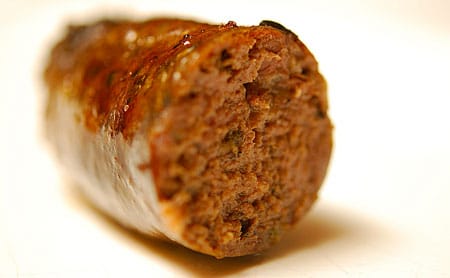
When life gives you lots of ducks or geese (this happens a lot with snow goose hunters), you should make duck sausage, or goose sausage, out of them. Use the shot-up birds you won’t feel bad about cutting up; save the perfect birds for roasting or other uses.
Other than snow geese, Canada geese, spoonies, diver or sea ducks are excellent candidates for sausage. I wouldn’t do this with nice pintails, mallards or wood ducks, though.
This sausage is “hunter’s style,” which to me means coarsely ground and flavored with traditional European game spices, such as caraway, juniper and sage. This duck sausage has all three, with sage as its main herb.
Juniper and caraway can sometimes be hard to find, although every major supermarket I’ve every been to has at least caraway. Juniper can be tougher to source, but if you live in the West there are a lot of wild species of juniper; the best is Juniperus communis. In the East, look for the blue berries on Eastern Red Cedar, Juniperus virginiana. You can buy juniper in fancy supermarkets, in places like Cost Plus World Market, and online through places like Penzey’s.
Once made, these will keep a week in the fridge, and can be frozen.
New to making sausage? You can find my detailed tutorial on how to make sausages at home here.
Duck Sausages, Hunter's Style
Ingredients
- 3 1/2 pounds duck or goose meat
- 1 1/2 pounds fatty pork shoulder or pork belly
- 34 grams kosher salt, about 2 level tablespoons
- 2 tablespoons chopped fresh sage
- 1 tablespoon ground black pepper
- 2 teaspoons caraway seed
- 2 teaspoons mashed and chopped juniper berries, about 10 berries (optional)
- 1/4 cup ice water
- 1/4 cup dark, malty beer, chilled
- hog casings
Instructions
- Get out about 15 feet of hog casings and soak them in warm water. If you don’t trust your source, run water through them to check for punctures or weak spots.
- Make sure all your equipment is cold; freeze your grinder’s grinding plate and blades, and the bowl you will put the meat into for 30 minutes to an hour. Do the same for the meat and fat. When everything’s nice and cold, mix the meat and fat with the salt and all the dry spices.
- Grind it all through a very coarse plate; I use a 10 mm plate. Test the temperature of the mixture, and if it’s 35°F or colder, go ahead and grind it all again through a coarser die, like a 6 mm or thereabouts. If it’s warmer, put the mix back in the freezer to chill until it hits 35°F or cooler. (if you don't have a very coarse plate, grind half the mixture a second time through the finer, typically 4.5 mm plate. It's important to grind the meat twice.)
- Once the sausage has been ground twice, test the temperature again to make sure it’s cold. I prefer to chill the mix down to 28°F to 32°F for this next stage. Chill the mix and when it’s cold enough, take it out and add the beer and water. Now, mix and knead the mixture in a big bin or bowl with your hands for a solid 2 minutes — your hands will ache with cold, which is good. You want everything to almost emulsify.
- Stuff the sausage into the casings rather loosely into a continuous coil. When you're done, it's time to make links. I like my sausages to be about 6 to 8 inches long, but it’s your choice. To twist them into links, tie off one end of the coil you just made. Pinch off links with your two hands and roll the link between them forward a couple times. Move down the coil and repeat, only this time roll backwards a few times. Repeat until you do the whole coil. (Here is a video showing how I do it.) Now look at the links, which will probably have air pockets in them. Use a sterile needle or sausage pricker (set it aglow in your stovetop flame) to puncture the casing over all the air pockets. Gently compress the links together to squeeze out the air pockets and rotate the links a bit more to tighten; this takes practice.
- Hang your links for at least 1 hour if your room is warm, and up to overnight if you can hang them in a place that’s 40°F or cooler. Don’t let them freeze yet. If you are not hanging overnight, let the sausages continue to dry uncovered in the fridge overnight before you seal them up and freeze. These sausages will keep a week in the fridge and a year in the freezer, if you have vacuum-sealed them.
Notes
Nutrition
Nutrition information is automatically calculated, so should only be used as an approximation.
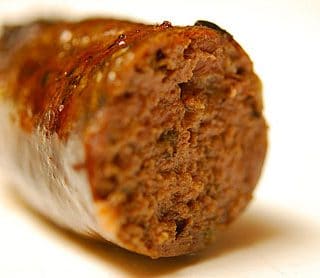
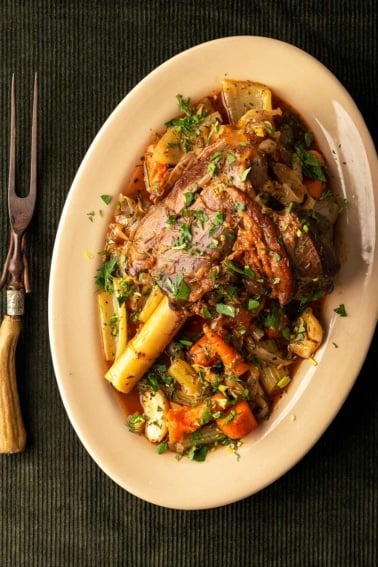
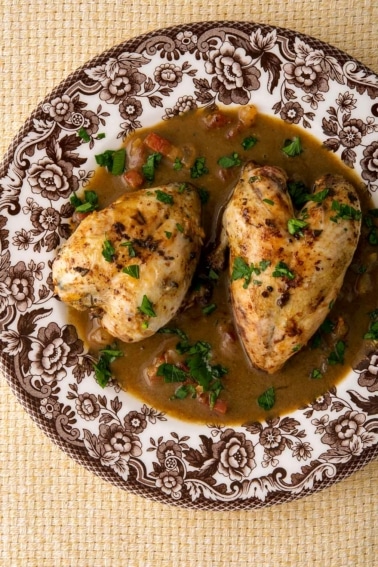
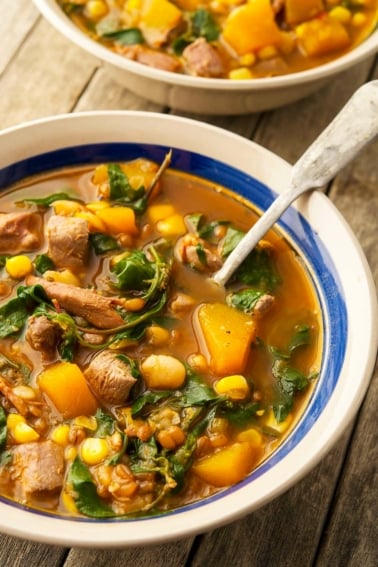
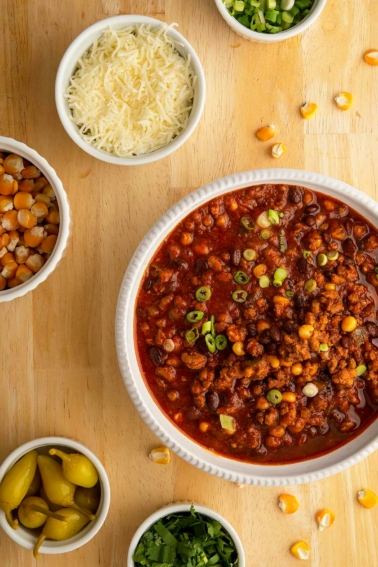
Would it benefit to use a curing salt in this recipe?
Joseph: Not unless you want to smoke them. If you do, add maybe 5 grams of Instacure no. 1 to a 5 pound batch.
You mention Chinese 5 spice seasoning in the hunter’s style duck sausage. But I don’t see it in the recipe.
How much to use?
Your recipes are super solid.
Thanks, Stan
Stanley: Ah! Thanks for the catch. Many years ago, I put 5 spice powder in this sausage. I no longer do.
Can I swap out the pork for beef of some kind like chuck? Or can I just add more duck fat and if so, what would the ratio of duck to duck fat would it be?
If I don’t have fresh sage would some dried sage work? And would a hefty dose of fresh garlic go well with this sausage?
Dustin: Absolutely. And yes re: garlic. Garlic is always welcome in my house. 😉
Got this recipe from Duck Duck Goose. Hands down best sausage recipe I have made with birds. Got to favourite around our house. I’d give it more stars if I could
Just made a small batch, using some geese breasts that have been hanging around the freezer. Taste test before stuffing was amazing. Can’t wait to use in a cassoulet for Thanksgiving.
I have dozens of well vacuumed sealed duck breasts from 2018 and 2019 and hoping they are OK to make sausage out of? Any additional steps for “older” duck breasts? Also, I do not have access to a sausage maker, so will make patties, but can I re-freeze them?
tia, Darren
Darren: Re-freezing meat isn’t ideal, as you will get significant moisture loss. But you can do it safely so long as it was thawed in the fridge and kept cold.
I get why you wouldn’t want to use spoonies or divers, but why not snow and Canadian geese?
Ed: I never say that. I use those geese all the time.
Thanks Hank! I’ve made it a few times with mallard and keep evolving the spices while keeping the technique the same. My family is very happy with the duck sausage. One of your books is on my Gift list now.
Do I leave the skin on the Muscovy breasts I intend to grind?
Amy: Nope. Render the fat off the skins and use it to cook with… then eat the crispy skins.
We raise muscovy ducks .Will that work too ? I’m about to put Guinness in it. What do you think?
Warren: Yes, those work well.
We’re going to be butchering our super fatty domestic ducks this weekend and plan on making this recipe (with apple brandy). Since our ducks have so much fat on them, do we also need to add the fatty pork? Thanks!
Amanda: You do, alas. Duck fat is too soft to use in place of pork fat. If you want to make an all-duck sausage, it needs to be a hot dog-style emulsified sausage.
I’m happy to do this. What is the ratio of meat to duck fat?
Gin seems like a perfect alternative if you cannot find juniper! Thanks for the recipe ?.
Hi, can i use my cull ducks? I have tons of cull mallards in our farm.. thanks.
Anne: Sure, why not?
any reason not to use duck legs? hows the texture vs breast meat in sausage ?
Brandon: Only reason is it’s persnickety to debone them. Go for it.
Amazing recipe. First time trying duck sausage. I only had mallards so I breasted and skinned them. Sausage tastes awesome. The pork gives it the texture and body of regular sausage while the duck provides the gamey flavor and some tenderness. Ended up being a little short on casing so I made some patties with the ground meat. That also turned out great.
I will have a hard time wanting to cook my ducks any other way.
Con: It’s a huge mess.
Hi! Why would you not use mallard? I have several pounds of breast without the skin, I think sausage sounds fantastic.
Marci: Because I rarely skin mallards. If they are skinless, go for it! Will be a great sausage.
Hello,
I have all your books and the recipe in duck, duck goose is slightly different. Is this the updated version? Which would you recommend?
Erik: I like them both, but I’d use the one in the book. It’s newer.